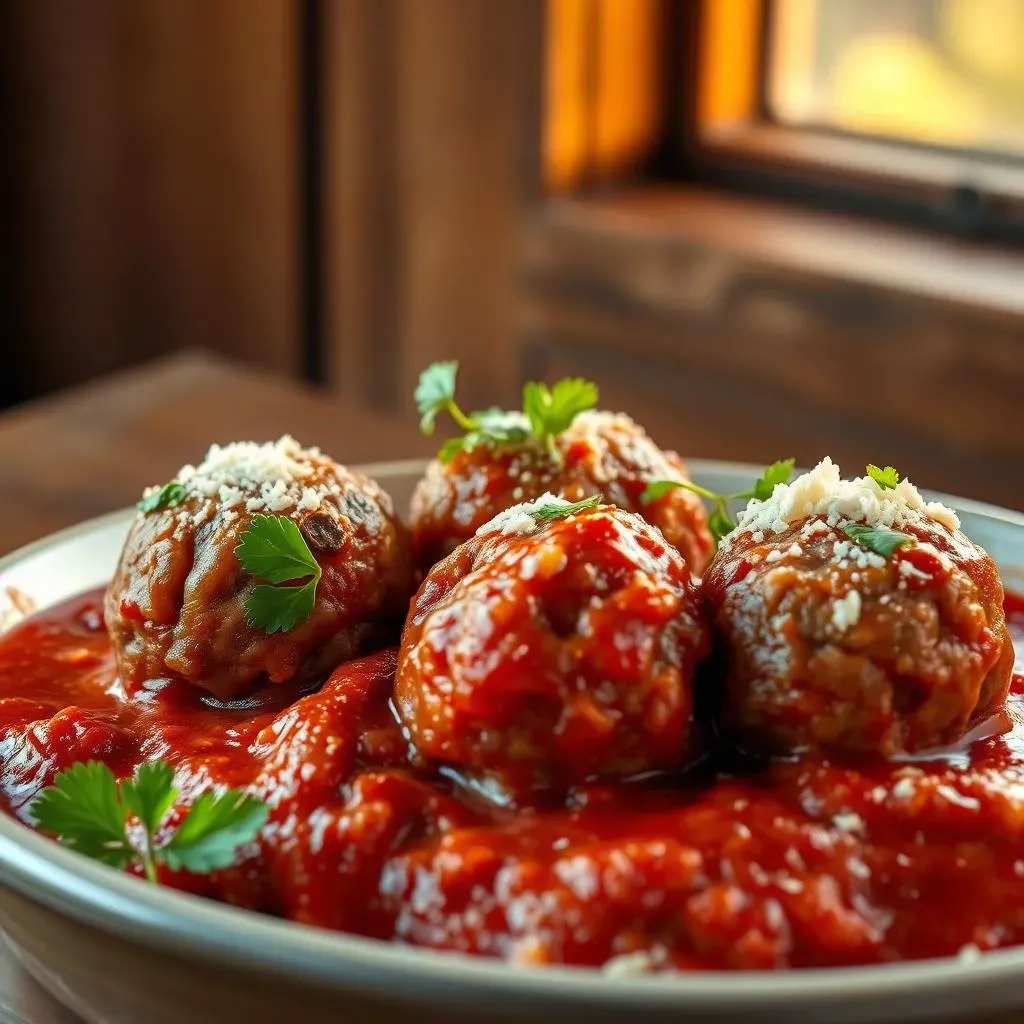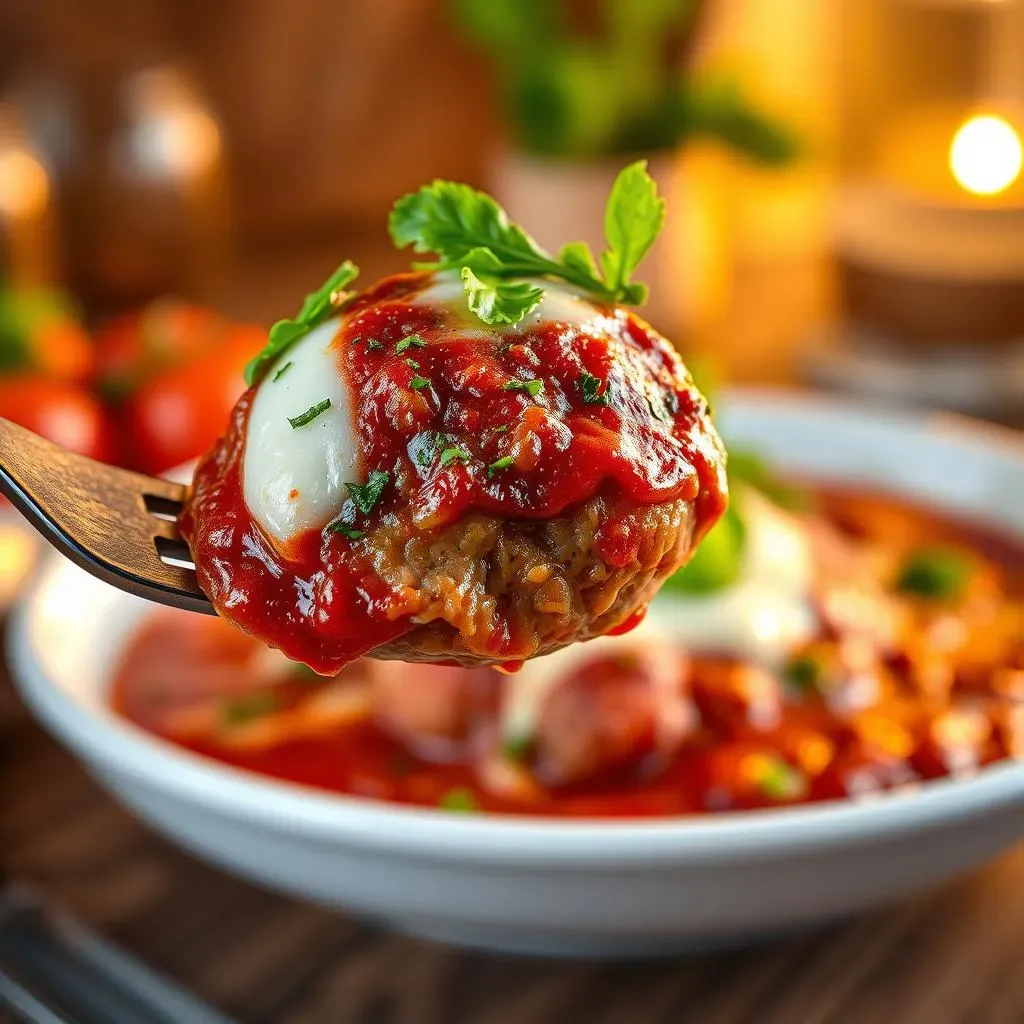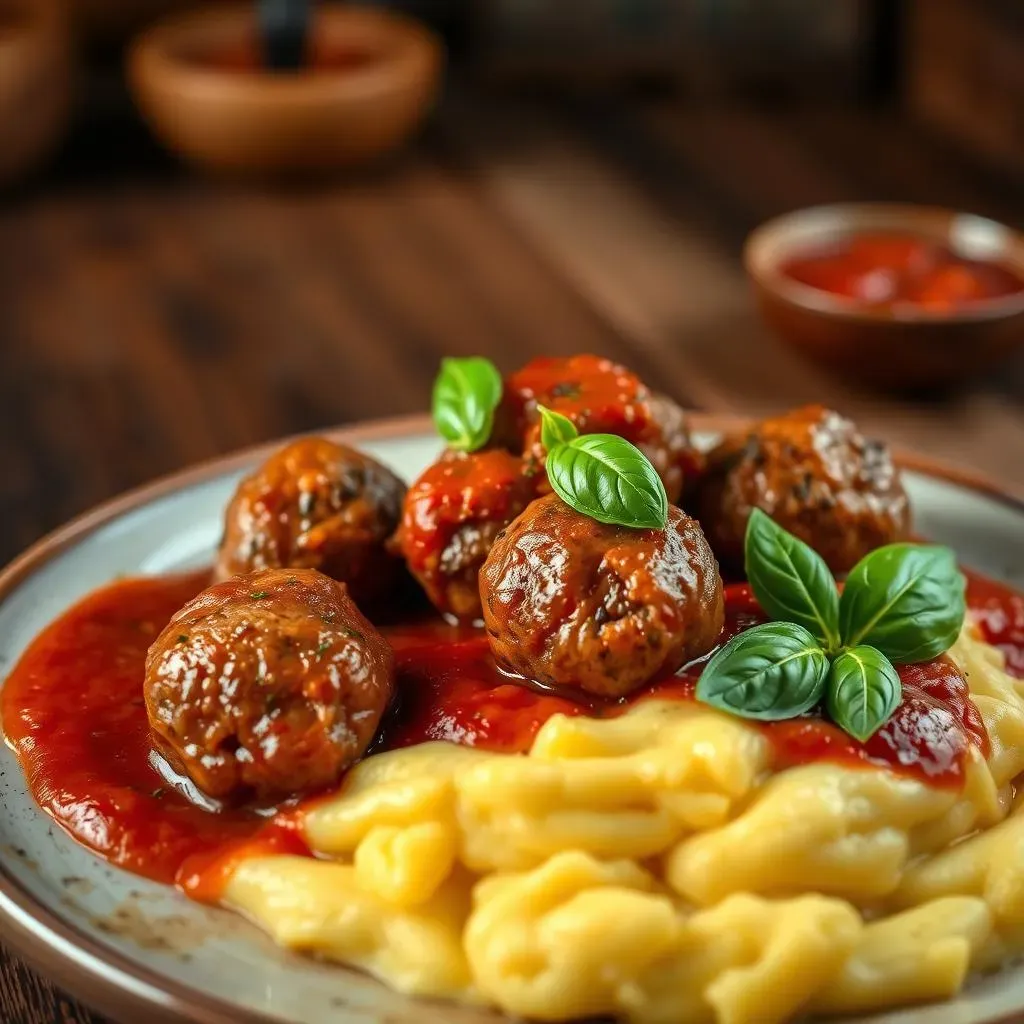Table of Contents
Ready to elevate your Italian cooking game? Forget bland, dry meatballs – we're diving headfirst into the world of *the best Italian meatball recipe with beef, pork, and veal*. This isn't just another recipe; it's a culinary adventure, a journey to meatball mastery. We'll uncover the secrets behind the perfect meatball blend, exploring why the combination of beef, pork, and veal creates an unparalleled flavor and texture. This isn't about following a recipe blindly; it's about understanding the *why* behind each ingredient and technique. We'll cover everything from selecting the finest cuts of meat to mastering the art of mixing, shaping, and cooking your meatballs to perfection. Get ready to impress your family and friends with meatballs so incredibly juicy and flavorful, they'll be begging for seconds (and thirds!). Prepare for a delicious deep dive into Italian culinary heritage – let's make some magic! This article will guide you through the process step-by-step. First, we'll explore the magic behind the three-meat blend. Then, we'll share our expert tips and tricks for achieving the perfect texture and flavor. Finally, we’ll walk you through the cooking process, ensuring your meatballs turn out perfectly every single time. So, grab your apron, gather your ingredients, and let's get cooking!
The Holy Trinity of Meat: Why Beef, Pork, and Veal Make the Best Meatballs

The Holy Trinity of Meat: Why Beef, Pork, and Veal Make the Best Meatballs
The Beef Factor: Richness and Structure
Let's start with the beef. Ground beef provides the foundation of your meatball, offering a rich, savory base. Think of it as the sturdy backbone, providing structure and a hearty texture. Different cuts offer varying fat content, impacting the final result. Leaner beef will result in a firmer meatball, while a fattier cut, like chuck, contributes to juiciness. Finding the right balance is key, and that's where the other two meats come into play. For some really delicious beef meatball recipes, check out our beef meatball recipes page!
The key here isn't just using any ground beef; it's about understanding the nuances of different cuts and how they affect the final product. A leaner cut, for example, might result in a drier meatball, while a fattier cut can make for a juicier one. Experimentation is key to finding your perfect balance, and don't be afraid to try different ground beef options! Need some ideas? We've got a great collection of ground beef meatball recipes to inspire you.
Beef Cut | Fat Content | Meatball Texture |
|---|---|---|
Sirloin | Lean | Firmer |
Chuck | Higher Fat | Juicier |
Pork's Contribution: Tenderness and Umami
Now, let's talk about pork. Adding ground pork to the mix introduces incredible tenderness. It's like adding a secret ingredient that magically softens the overall texture, creating a melt-in-your-mouth experience. Pork also contributes a depth of flavor, a certain umami richness that elevates the entire meatball to another level. It's the secret weapon that takes your meatballs from good to phenomenal. If you are looking for some unique recipes, check out our beef and pork meatball recipes!
The fat content in pork is also crucial. It helps keep the meatballs moist and prevents them from drying out during cooking. Think of it as the meatball's built-in moisturizer! The combination of beef and pork already creates a fantastic base, but the addition of veal takes things to a whole new level of deliciousness. For a truly exceptional meatball experience, you'll want to explore the beef, pork and veal meatball recipe options available.
- Adds tenderness
- Enhances flavor
- Increases juiciness
Veal's Magic: Creamy Texture and Subtle Sweetness
Finally, we arrive at veal. Veal adds a delicate sweetness and a wonderfully creamy texture that rounds out the flavor profile. It's the finishing touch, the secret ingredient that transforms a good meatball into a masterpiece. The subtle sweetness of veal complements the richness of the beef and the tenderness of the pork, creating a harmonious blend of textures and tastes that is simply irresistible. Need some ideas on how to serve your meatballs? Check out our beef meatball spaghetti recipe!
Think of it this way: beef provides the structure, pork adds tenderness, and veal brings the creamy, delicate sweetness that ties everything together. It's a symphony of flavors and textures, a culinary masterpiece in miniature form. The combination is truly magical, resulting in meatballs that are incredibly juicy, flavorful, and incredibly tender. Once you try this combination, you'll never want to go back to using just one type of meat. For even more inspiration, check out our collection of Italian beef meatballs recipes.
Mastering the Meatball Mix: Techniques for Juicy, Flavorful Perfection

Mastering the Meatball Mix: Techniques for Juicy, Flavorful Perfection
The Art of the Blend: Proportions and Precision
Alright, let's get down to the nitty-gritty: mixing the meats. The magic of our *best Italian meatball recipe with beef, pork, and veal* lies in the precise proportions. While many recipes offer a 1:1:1 ratio, don't be afraid to experiment! A slightly higher proportion of pork can add extra tenderness, while more beef gives a heartier texture. Remember, it's all about finding your perfect balance. I personally lean towards a slightly higher percentage of pork for that melt-in-your-mouth experience. But hey, that's just me. Feel free to explore different ratios and find what works best for your palate. Check out our beef, pork and veal meatball recipe for a starting point!
The key is to gently combine the meats, avoiding overmixing. Overmixing can lead to tough meatballs, so treat your meat mixture with kid gloves. Think of it like making a delicate cake batter – you want to combine the ingredients just until they're evenly distributed. Once you've achieved that perfect blend, it's time to move on to the next stage: adding the other ingredients. But before we do, let's take a look at some common questions and concerns. For more ideas, check out our Italian beef meatballs recipe.
Meat Type | Suggested Ratio | Impact on Meatball |
|---|---|---|
Beef | 30-40% | Structure, Richness |
Pork | 40-50% | Tenderness, Flavor |
Veal | 20-30% | Creaminess, Subtle Sweetness |
Beyond the Meat: Binding Agents and Flavor Boosters
Now comes the fun part: adding the supporting players! These aren't just fillers; they're crucial to creating juicy, flavorful meatballs. Breadcrumbs, for example, absorb moisture and add texture. Soaked breadcrumbs are even better, as they create a softer, more tender meatball. Eggs act as a natural binder, helping the meatballs hold their shape. Then there are the aromatics – garlic, onion, herbs – these are where you really inject your personality into the recipe. Don't be afraid to experiment with different herbs and spices to create your signature meatball blend. For those who are watching their carb intake, check out our keto beef meatball recipe.
Remember, the goal is balance. You want the flavors to complement each other, not overpower one another. A little goes a long way with spices and herbs. Start with small amounts and adjust to your taste. And don't forget the cheese! Parmesan or Pecorino Romano adds a salty, umami punch that takes your meatballs to the next level. But again, moderation is key. Too much cheese can make your meatballs heavy and greasy. For a simpler approach, try our easy beef meatballs recipe.
- Breadcrumbs: Adds texture and absorbs moisture
- Eggs: Binds the ingredients together
- Garlic & Onion: Adds savory depth
- Herbs & Spices: Enhances flavor
- Cheese: Adds salty, umami punch
Shaping and Prepping for Perfection
Alright, your meat mixture is ready. Now for the shaping! This is where you get to be creative. You can roll them into classic spheres, or get fancy with oblong shapes. The size is up to you, but aim for consistency; uniform meatballs cook evenly. Gently roll them in your hands, avoiding compacting the mixture too tightly, which will result in dense meatballs. Remember, you want to maintain that airy texture. After shaping, give your meatballs a little time to rest in the refrigerator. This allows the flavors to meld and the proteins to relax, resulting in even more tender meatballs. Want a different shape? Check out our beef meatball sliders recipe for inspiration!
Once they've chilled for a bit (about 30 minutes), they’re ready to hit the pan or oven! Whether you prefer pan-frying, baking, or simmering, the key is to cook them slowly and gently to ensure they’re cooked through without drying out. Over-high heat will result in tough, dry meatballs, while a gentle approach will reward you with tender, juicy perfection. For another cooking method, check out our beef meatball pho recipe, which uses a simmering technique.
From Pan to Plate: Cooking and Serving Your Culinary Masterpiece

From Pan to Plate: Cooking and Serving Your Culinary Masterpiece
Cooking Methods: Pan-Frying, Baking, or Simmering?
Now that our meatballs are prepped, it's time for the main event: cooking! You've got options. Pan-frying delivers a beautiful browned exterior and juicy interior. It's quick and satisfying, perfect for a weeknight meal. Baking offers a hands-off approach, ideal for larger batches or when you need to multitask. Simmering in sauce is a classic Italian method that infuses the meatballs with incredible flavor. Each method has its own charm, so choose the one that best suits your cooking style and time constraints. For a quick and easy method, check out our easy beef meatballs recipe.
Regardless of your chosen method, remember to cook the meatballs gently and evenly. Avoid overcrowding the pan or baking sheet; this ensures even browning and prevents steaming, which can lead to less flavorful meatballs. Use a meat thermometer to ensure they reach an internal temperature of 165°F (74°C) for food safety. For a unique twist, try our beef meatball pho recipe which uses a simmering method.
- Pan-frying: Quick, crispy exterior
- Baking: Hands-off, even cooking
- Simmering: Flavorful, tender meatballs
Serving Suggestions: Beyond Spaghetti and Meatballs
Let's face it: spaghetti and meatballs is a classic for a reason. But don't limit yourself! These incredible meatballs are incredibly versatile. Serve them atop creamy polenta, nestled in a hearty stew, or as part of a vibrant meatball sub. Get creative! The possibilities are endless. For an alternative, check out our beef meatball sliders recipe.
Consider the sauce. A simple marinara is always a winner, but don't be afraid to experiment. A creamy tomato sauce, a vibrant pesto, or even a spicy arrabbiata can transform your meatball experience. The key is to choose a sauce that complements, not overpowers, the delicate flavors of your meatballs. For a different kind of meatball experience, try our beef meatball pasta recipe.
Serving Suggestion | Sauce Pairing |
|---|---|
Spaghetti | Marinara, Meat Sauce |
Polenta | Creamy Tomato, Pesto |
Sub Sandwich | Spicy Marinara, Arrabbiata |